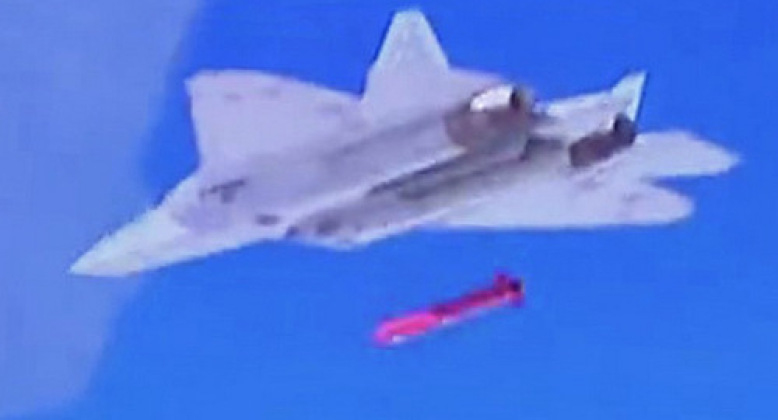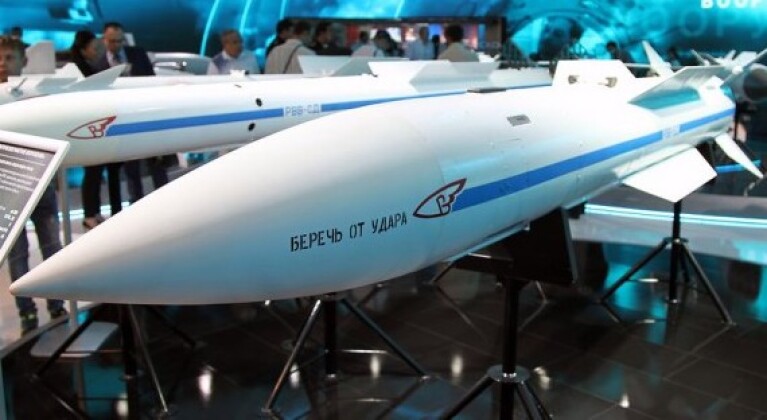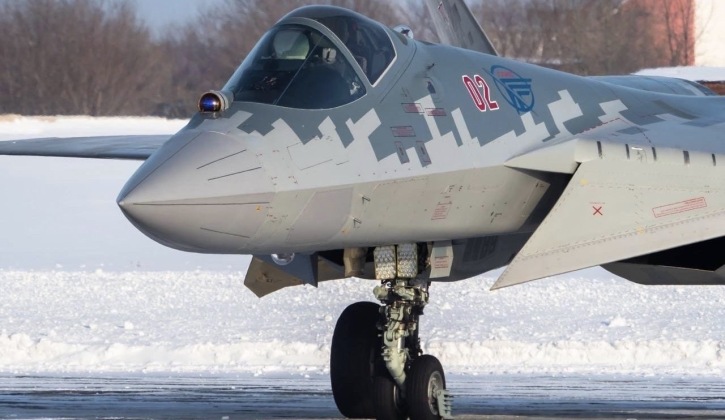News
British Sources Indicate Russian Su-57 Fighters Using Extreme Range R-37M Missiles to Shoot Down Ukrainian Aircraft

Since the participation of the Su-57 fifth generation fighter in the Russian-Ukrainian War was first reported in March 2022, a number of reports have emerged regarding the roles it has fulfilled. The aircraft was initially reported to be engaging in strike and later air defence suppression missions, likely using Kh-59MK2 and Kh-31 cruise missiles, as well as supporting electronic warfare efforts. Subsequently from October 2022 reports began to emerge that the fighters had been involved in air to air combat, and in particular that a Su-27 fighter and possibly a Su-24 strike fighter operated by the Ukrainian Air Force had been shot down by the new Russian aircraft at an extreme range of 217km after carrying out a strike on Russia’s Belgorod region.
As well as experience in multiple kinds of combat, the Ukrainian theatre has also provided an optimal testing ground for the Su-57’s sensor suite of six AESA radars and an infrared search and tracking system, which allow it to track more targets simultaneously than any other fighter in the world and over extreme ranges. Operations in Ukraine are expected to increase with time, with the size of the Su-57 having more than doubled in 2022 increasing from four to ten fighters, with further growth to reach 22-24 fighters expected in 2023.
The initial report of Su-57s being deployed for air to air combat was supported by a later report in January 2023 by the British Defence Ministry that the fighters were “launching long range air to surface or air to air missiles into Ukraine,” with this serving as the first Western confirmation that the fighters were indeed involved in operations and had been “since at least June 2022.” The range of the Su-57’s reported kill in October provided a strong indication that the fighters were using Russia’s longest ranged air to air missile the R-37M, which has a 400km maximum engagement range and is the only known air to air missile outside China able to threaten manoeuvrable targets at ranges exceeding 200km. The language used by the British Defence Ministry, launching missiles “into Ukraine” from long standoff ranges, was in line with this. Subsequently the British conservative outlet The Conversation reported in mid-February that “The Russian MiG-31 and Su-57 operating the R-37M long range hypersonic missile have engaged Ukrainian aircraft at a range of over 200kms from the safety of Russian airspace,” providing the clearest report of how the new Russian fighters were contributing to anti aircraft operations.

The Su-57’s use for air to air operations, particularly at long standoff ranges, is a very significant development for the program and for Russian combat aviation more broadly. Operations in Ukraine already made the Su-57 the world’s first post-fourth generation fighter to engage in combat in a high intensity theatre, and moreover to do so against a major state military. Despite the U.S. Air Force having operated fifth generation fighters for over 17 years, it has yet do so so with its own fleet – nor has China with deploys a fifth generation fleet over 20 times the size of Russia’s. To engage in air to air combat, however, particularly against formidable targets such as Su-27s, shows that the Su-57 is not limited to an initial operating capability and despite the small numbers in service that it can seriously contribute to combat operations. As the fleet begins to grow more rapidly, this means the Defence Ministry will be able to fully rely on it for combat duties without a long lag time after service entry. This contrasts to other fighter programs, for example the F-22, which was restricted to a limited initial operating capability for over four years after the first airframes were delivered, and the F-35 which is still considered far from ready for high intensity combat and would be unlikely to see deployments for air to air engagements in a major state on state war today. The Pentagon has accordingly continued to deny permission for full scale F-35 production – a full 23 years after the class made its first flight. Although the Su-57’s entry into service was delayed by over five years, this time may well have been used by its developers to ensure that it was close to fully combat ready from near the beginning of its joining the fleet, bearing a contrast to how the U.S. pursued its own fifth generation programs.

In contrast to the Su-57, the F-22 has never used any beyond visual range weapons in combat, and gained its sole air to air kills in 2023 against balloons over the United States and Canada. The F-35 has a single reported air to air kill, albeit also at very close ranges and against a cargo drone near the Gaza Strip rather than in a high intensity battlefield. The Chinese J-20 meanwhile has never seen any combat, despite being deployed to intercept and repel American warplanes over the East China Sea repeatedly, which leaves the Su-57’s status among fighters of its generation entirely unique. Its unique combat experience including air to air engagements has the potential to significantly increase foreign interest in the Su-57 as expanding production lines by the late 2020s are expected to be able to accommodate significant export orders.
Earlier in February Russia and India discussed the possibility of Su-57 license production for the Indian Air Force, following the precedent set by multiple prior Russian fighter classes such as the Su-30MKI of which India purchased over 270 between 2000 and 2020. The possibility of ‘off the shelf’ Indian orders, at least for initial batches, also remains, as the country has consistently expressed a strong interest in the fighter class. Algeria has reportedly already placed orders for Su-57s which are expected to be delivered near the end of the decade, after the country more than doubled its acquisitions budget to facilitate modernisation in the face of potential threats from NATO. These are expected to be the two leading clients, much as they were for the Su-30MKI/MKA. As Russia continues to invest in further expanding manufacturing facilities, the Su-57 is expected to see production rates at close to 30 aircraft per year as orders for the older Su-30 and Su-35 are gradually cut.












